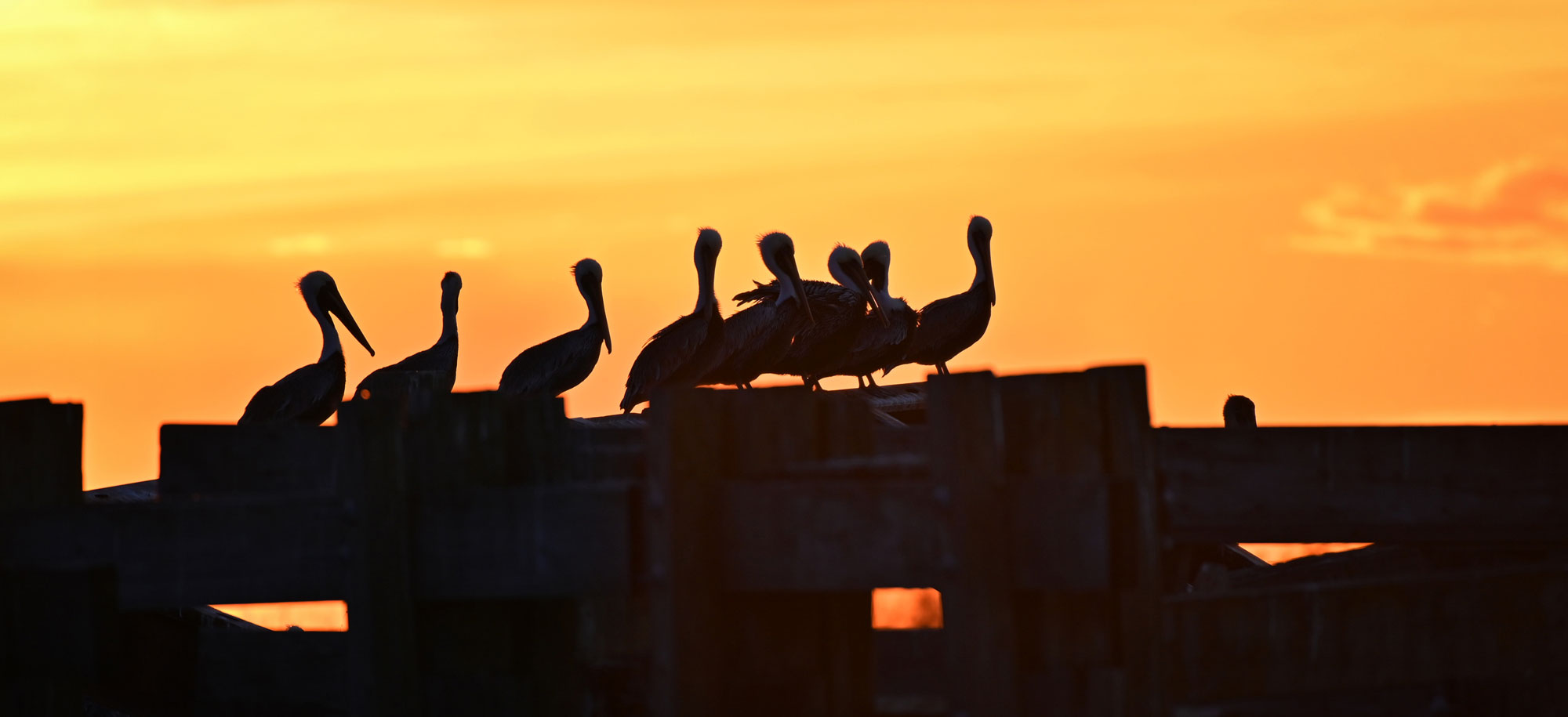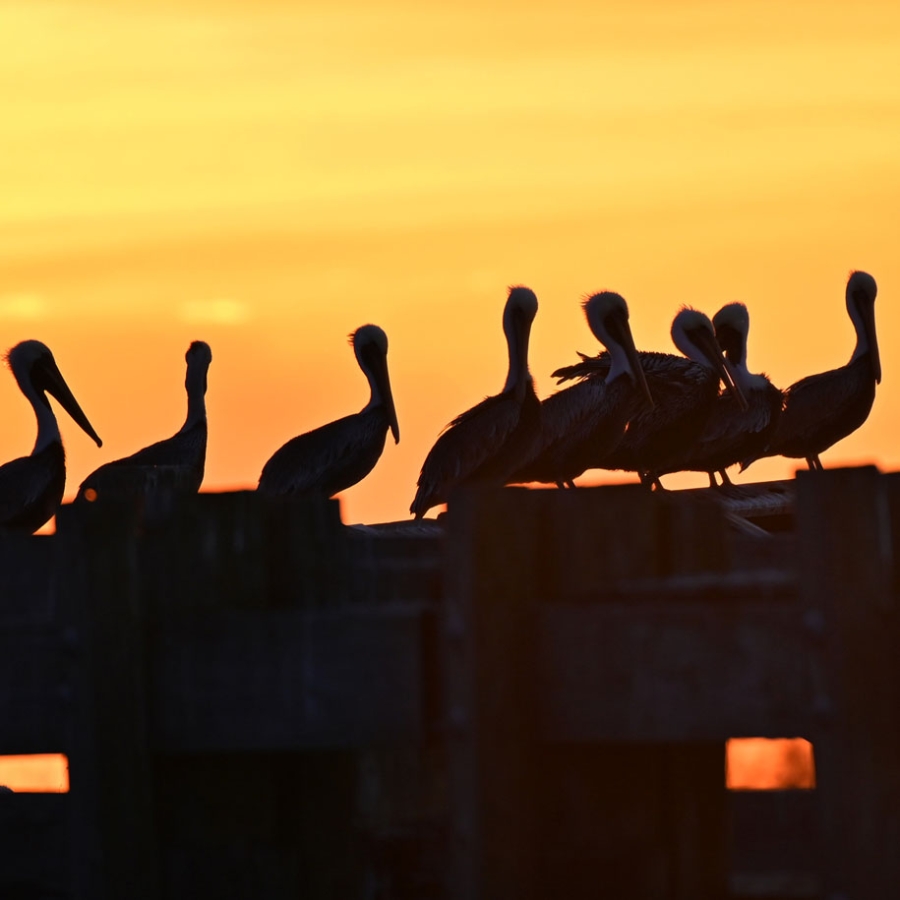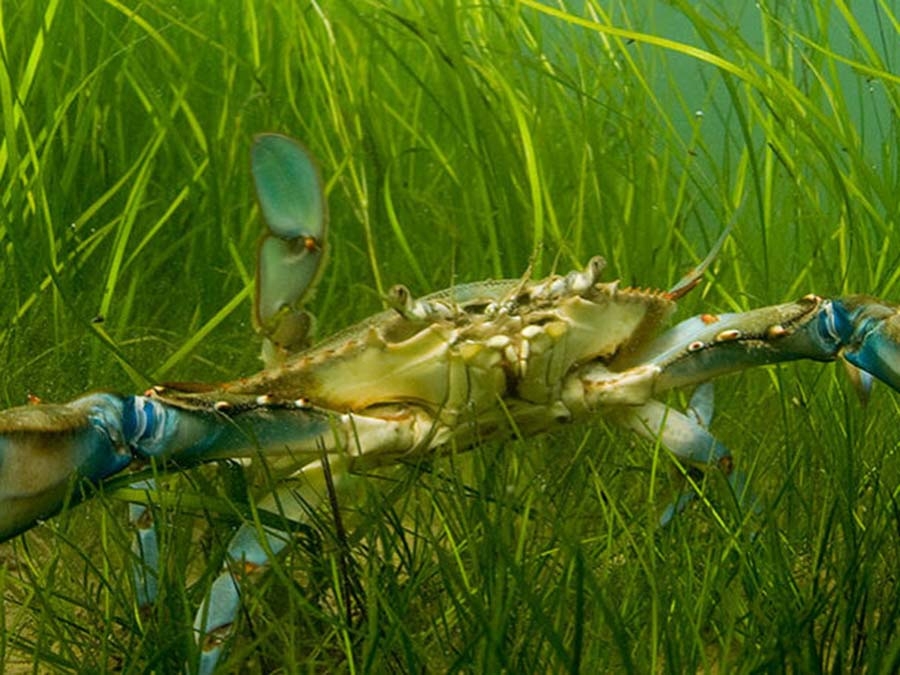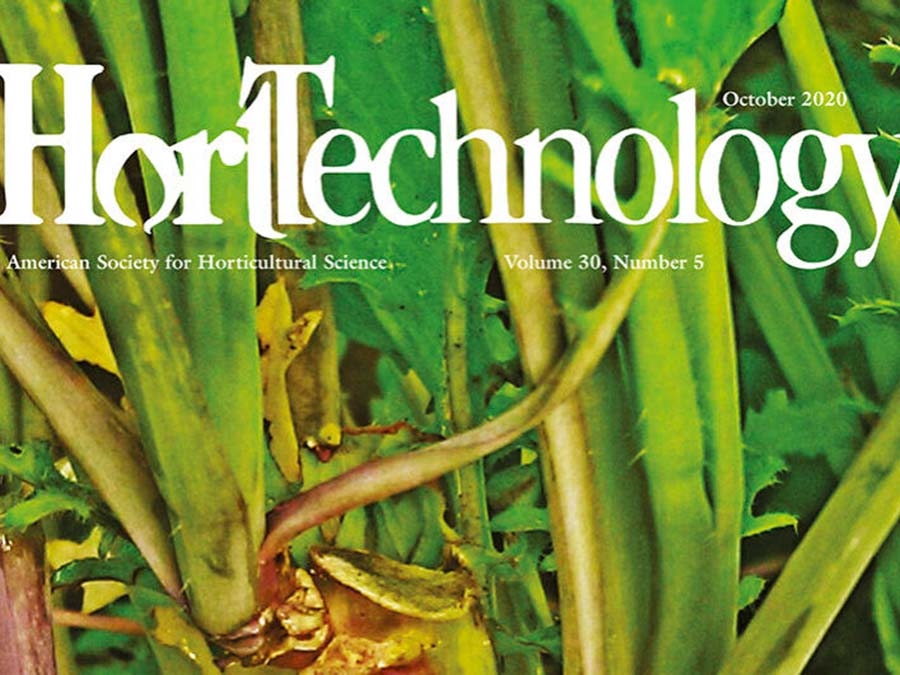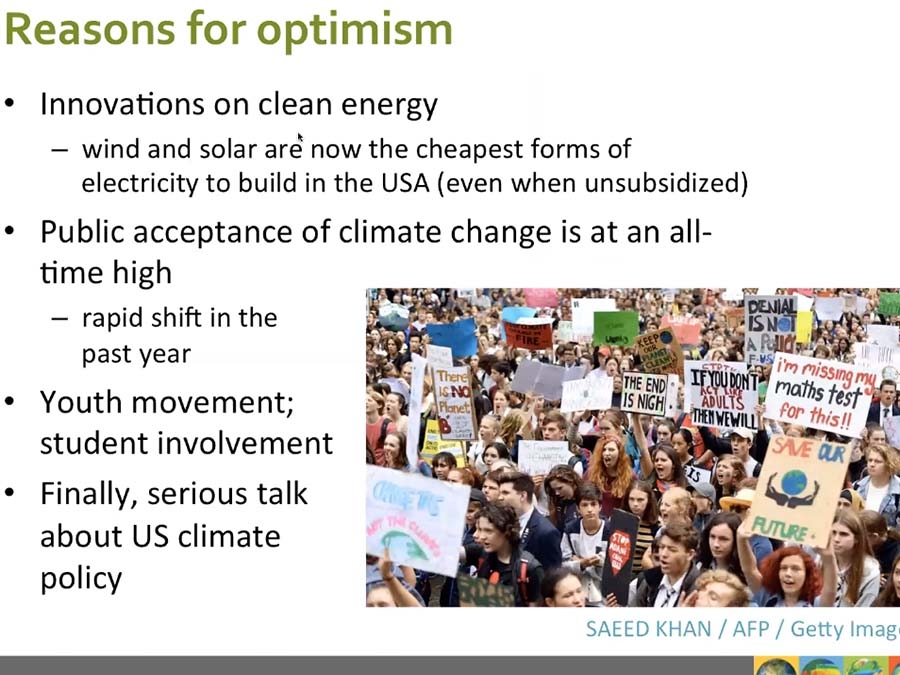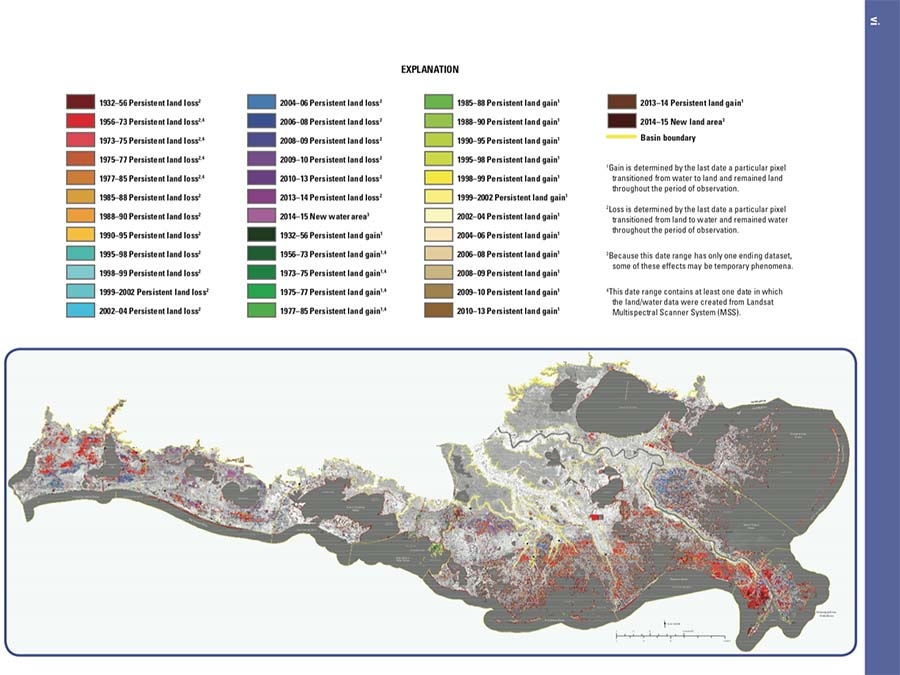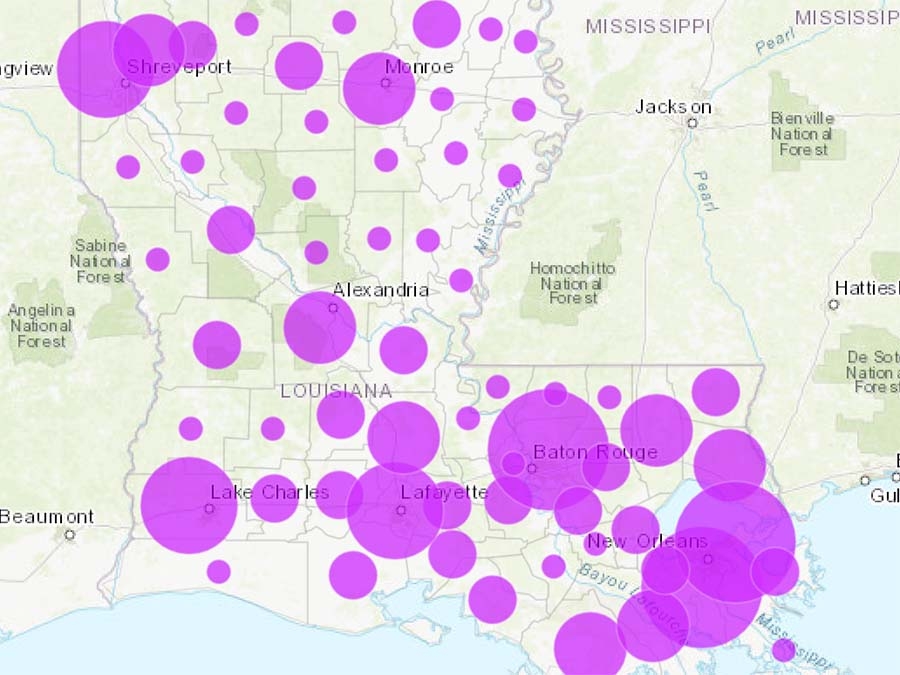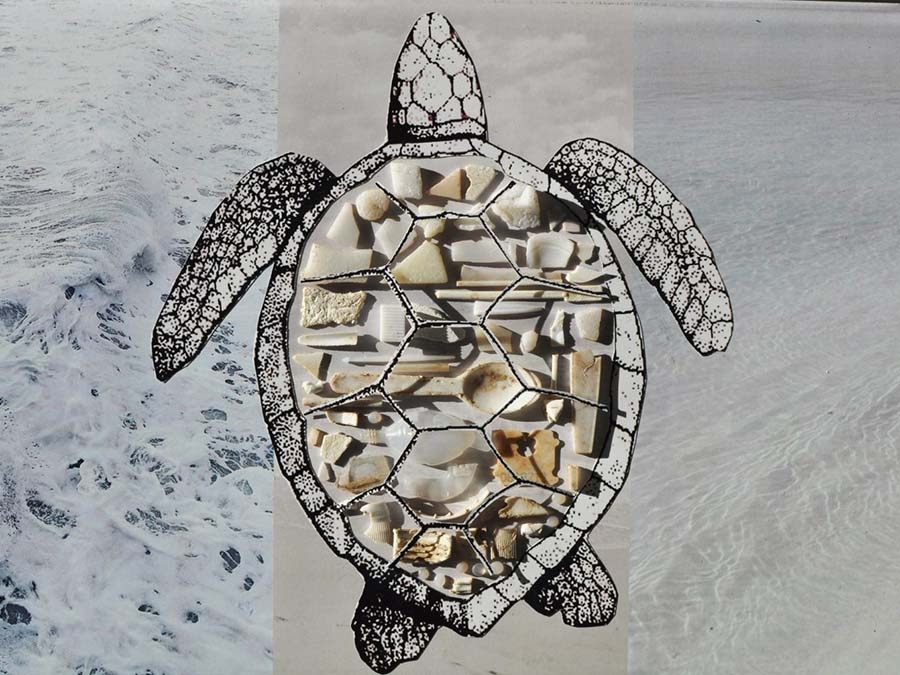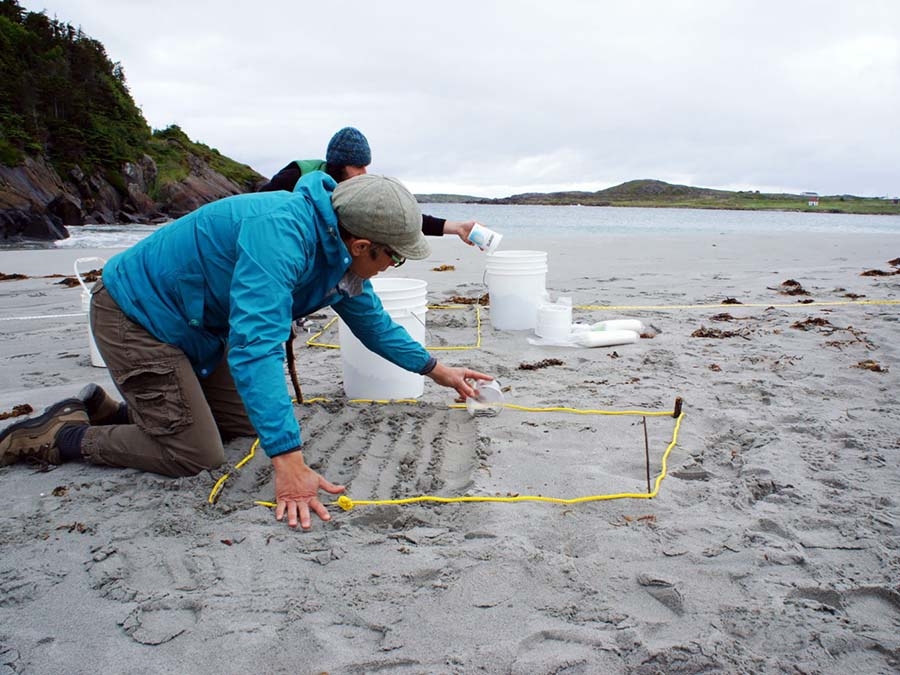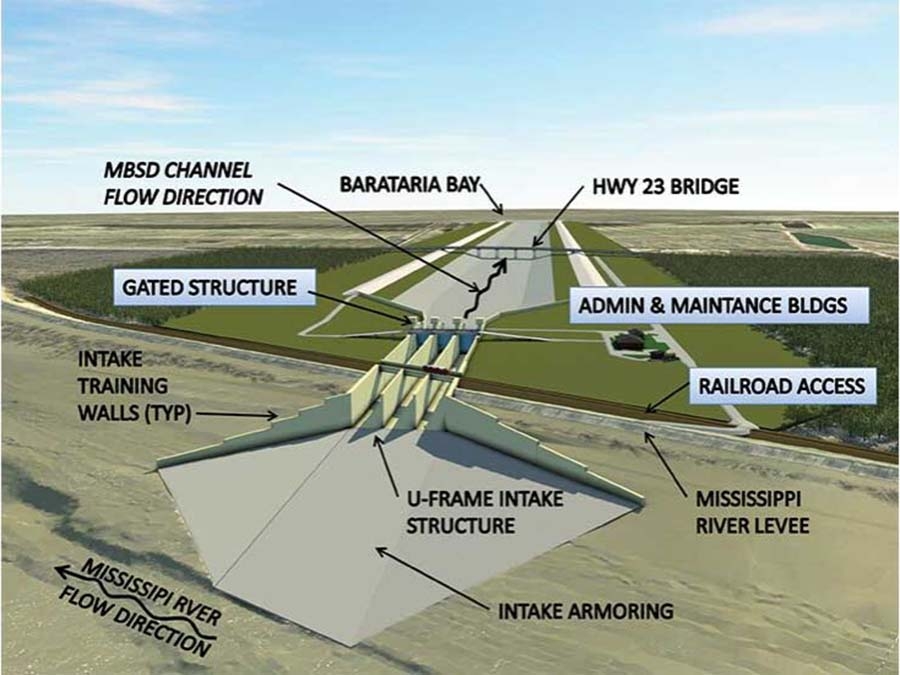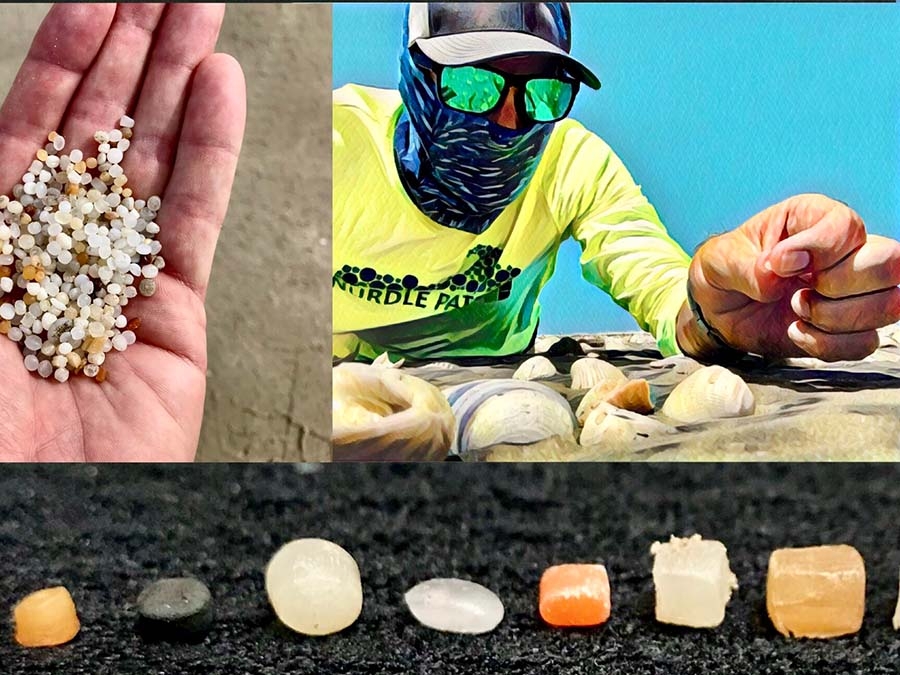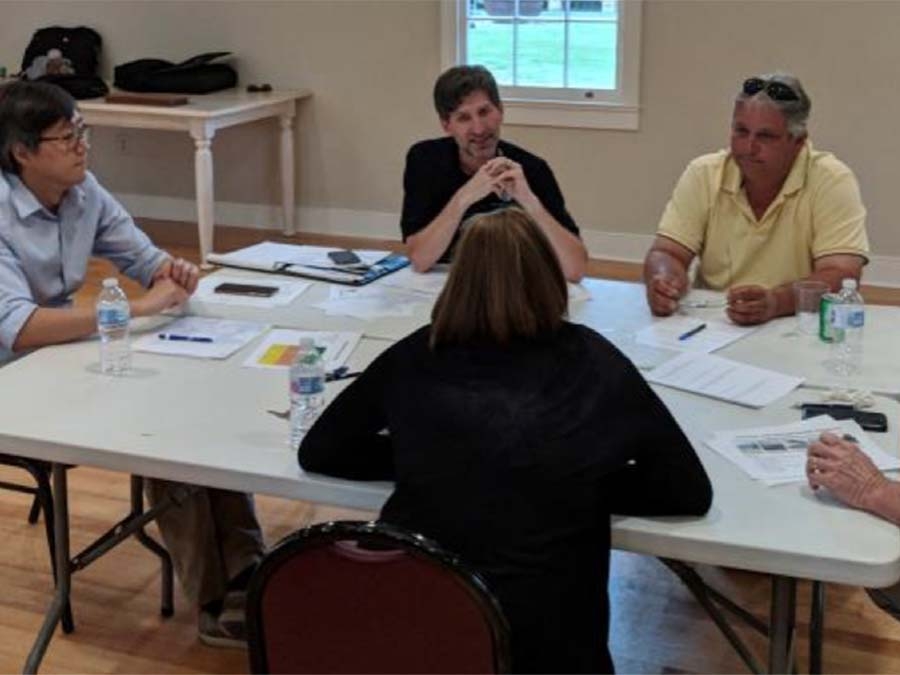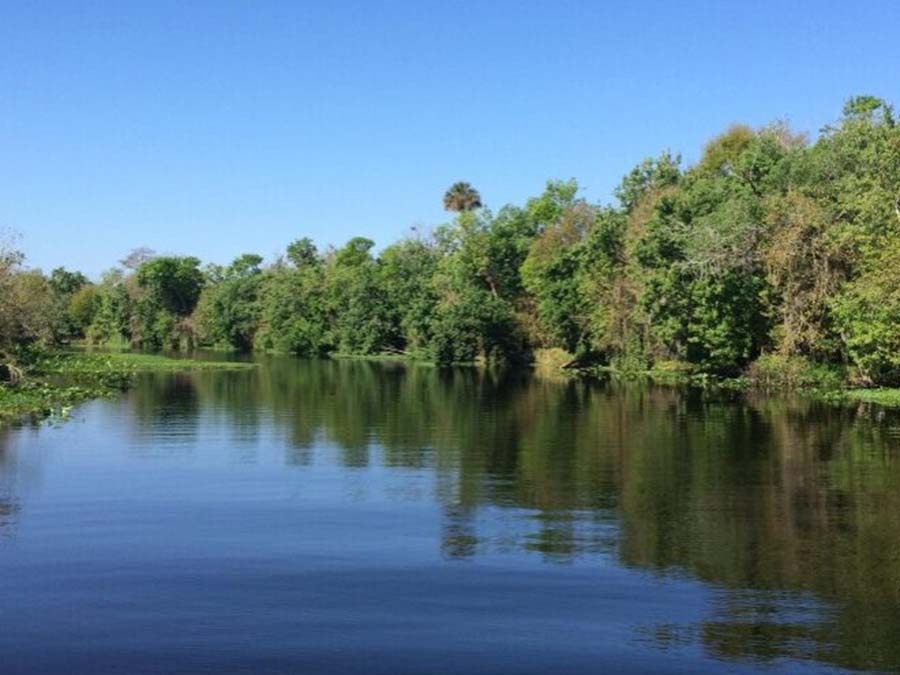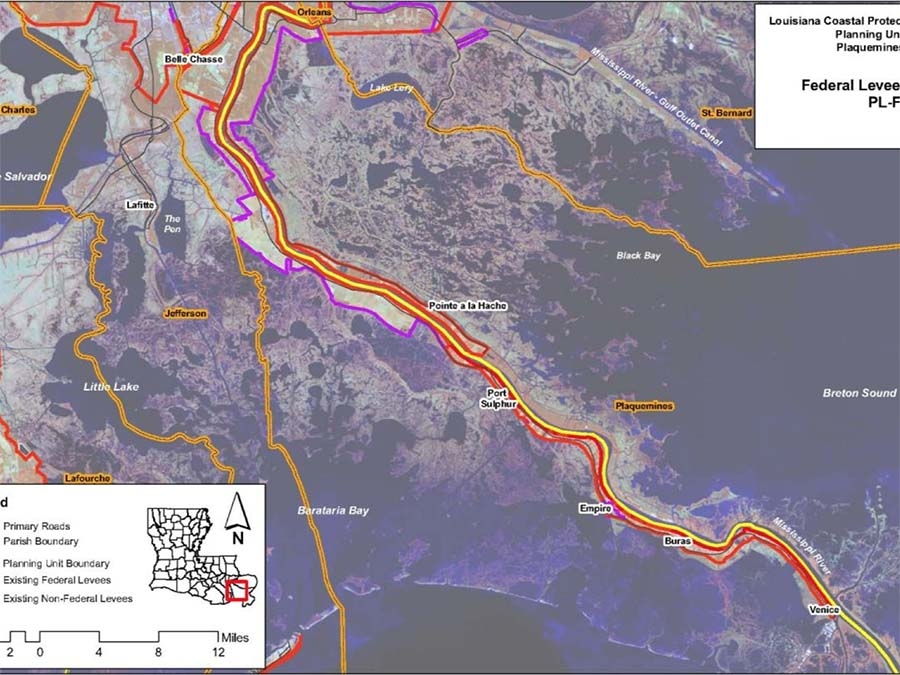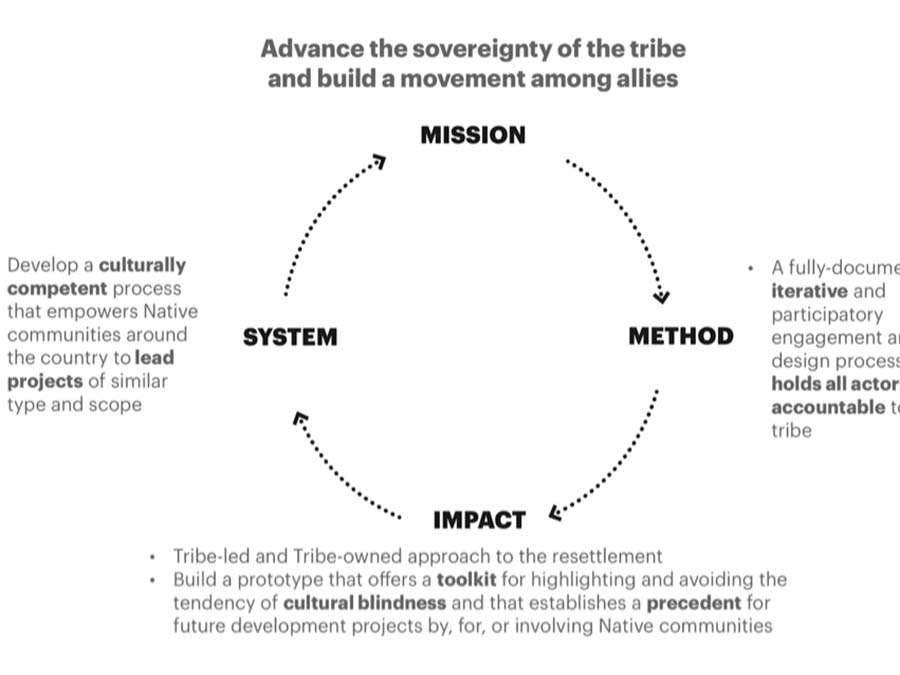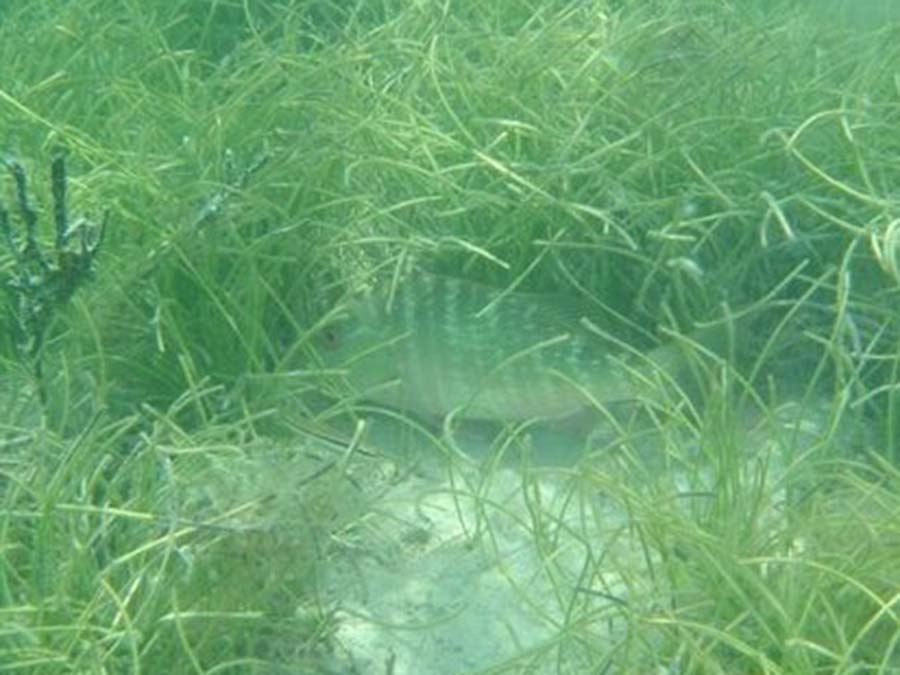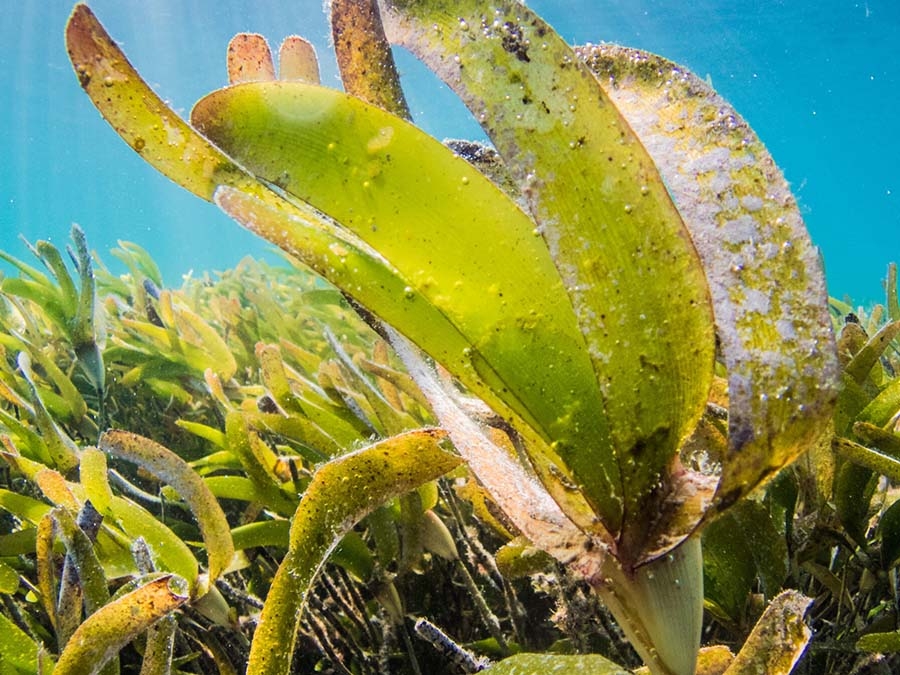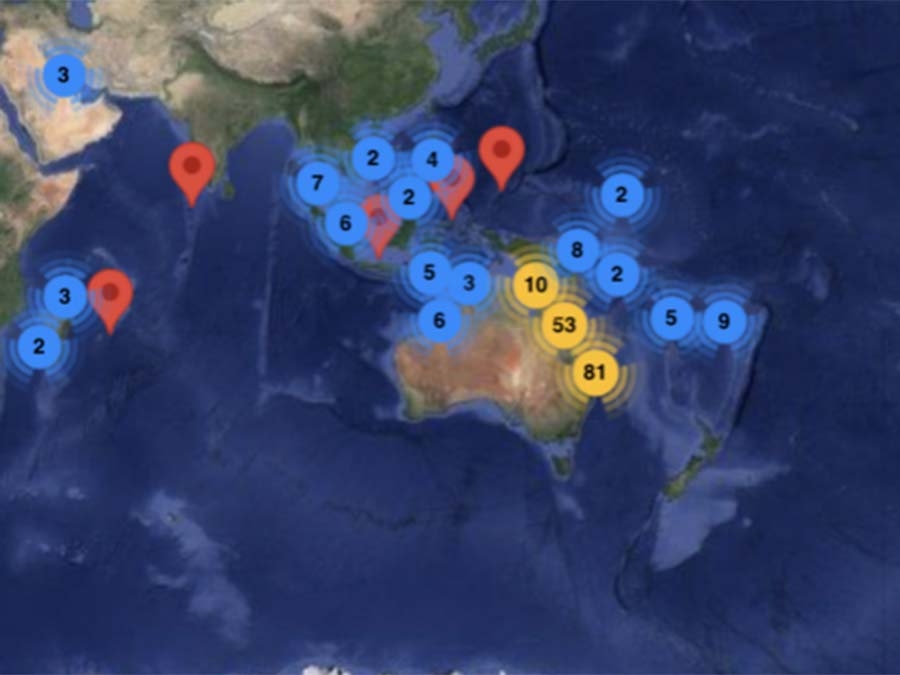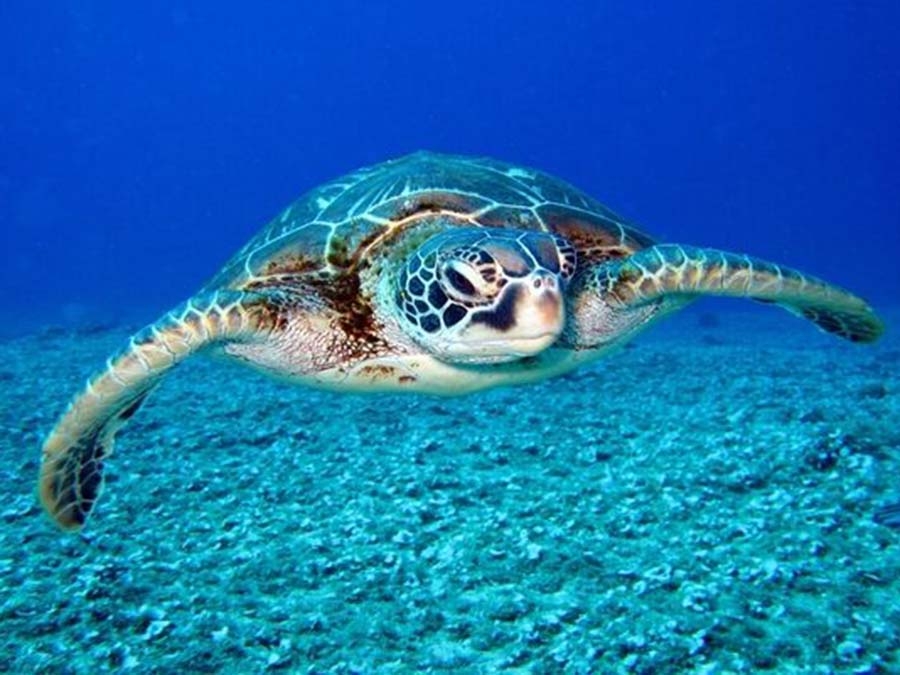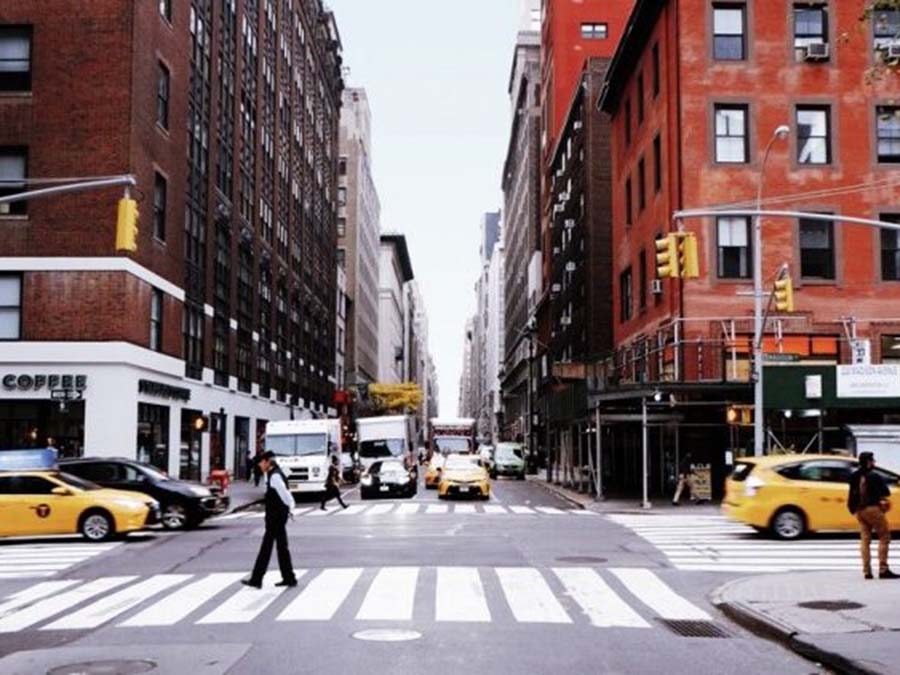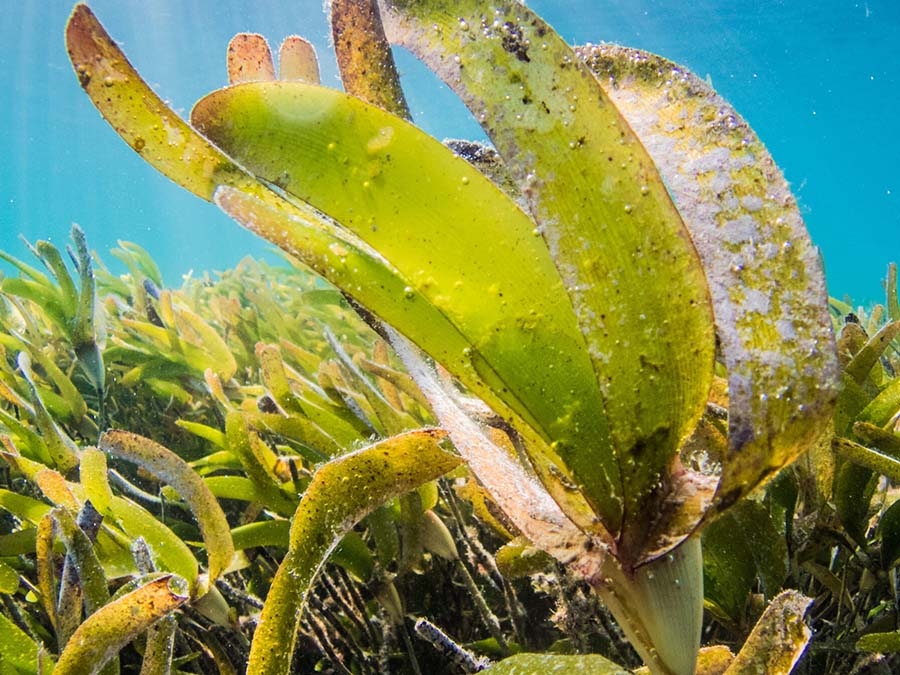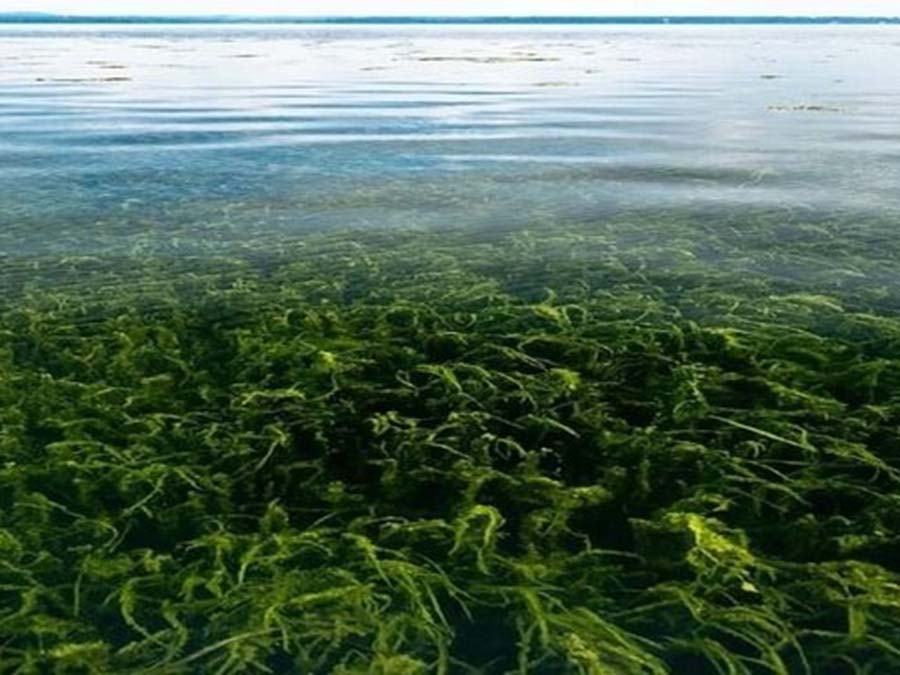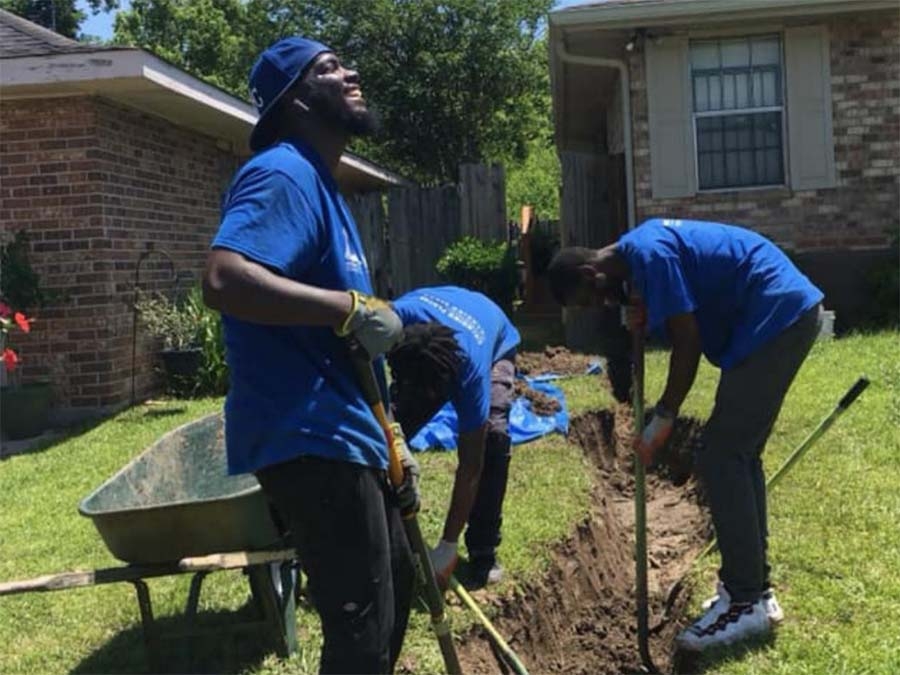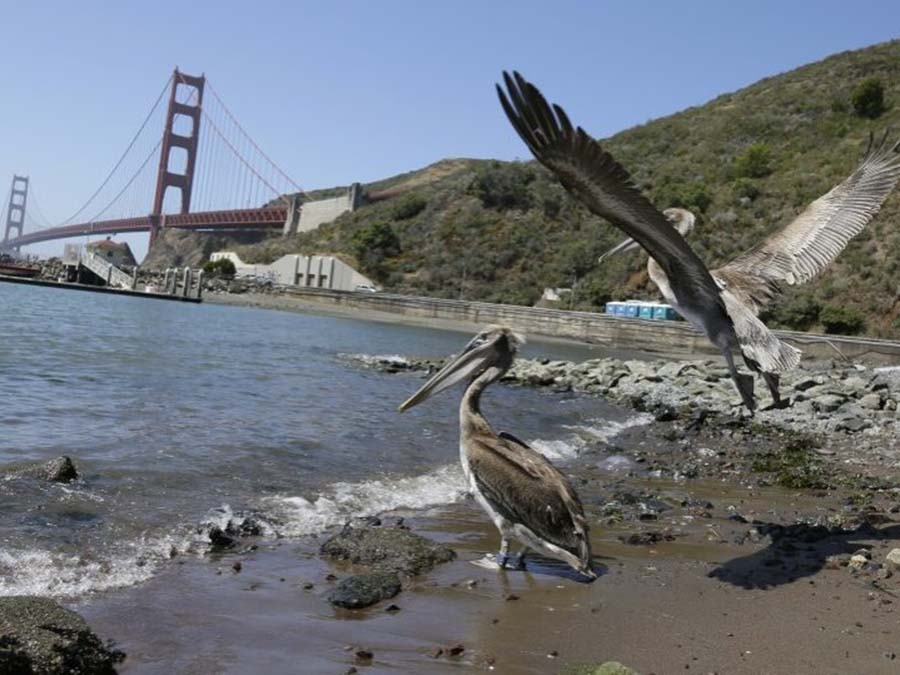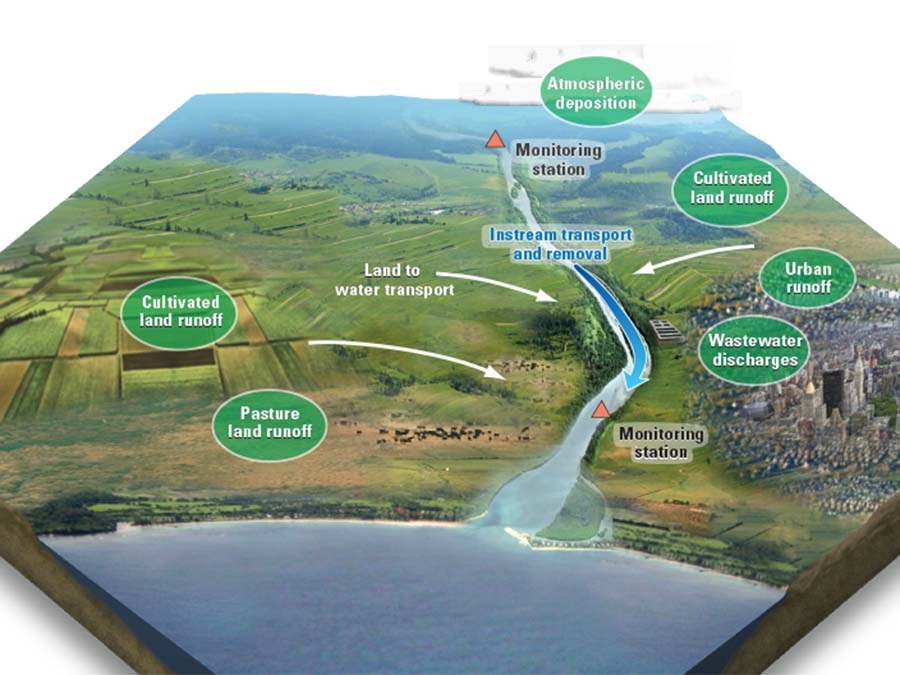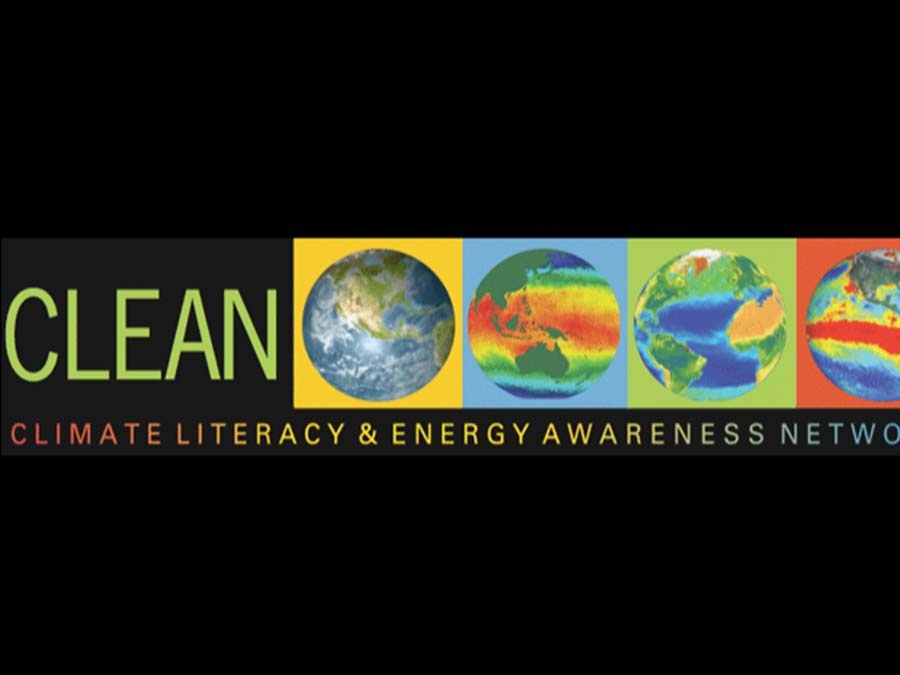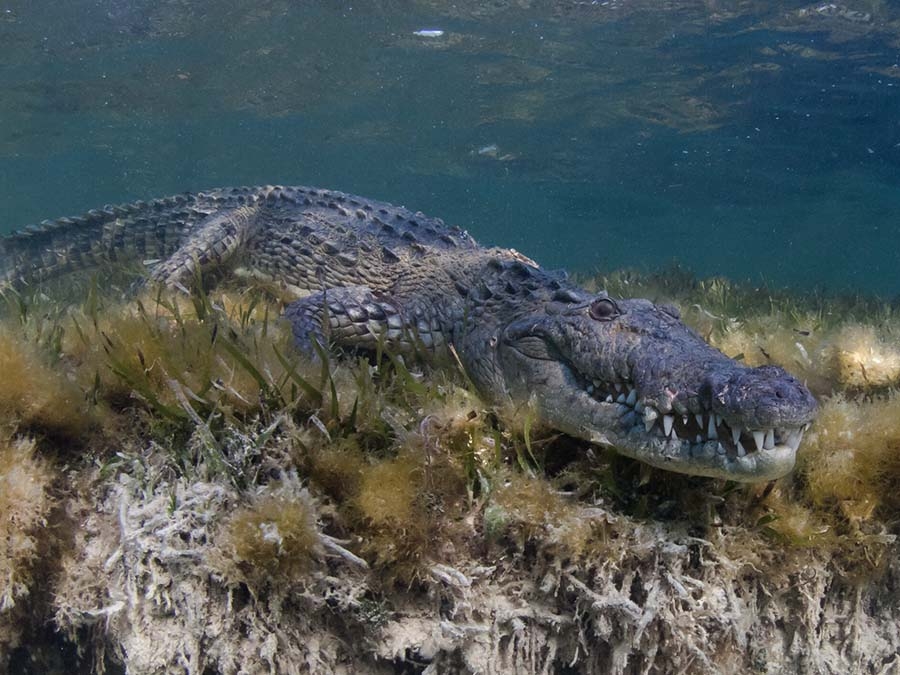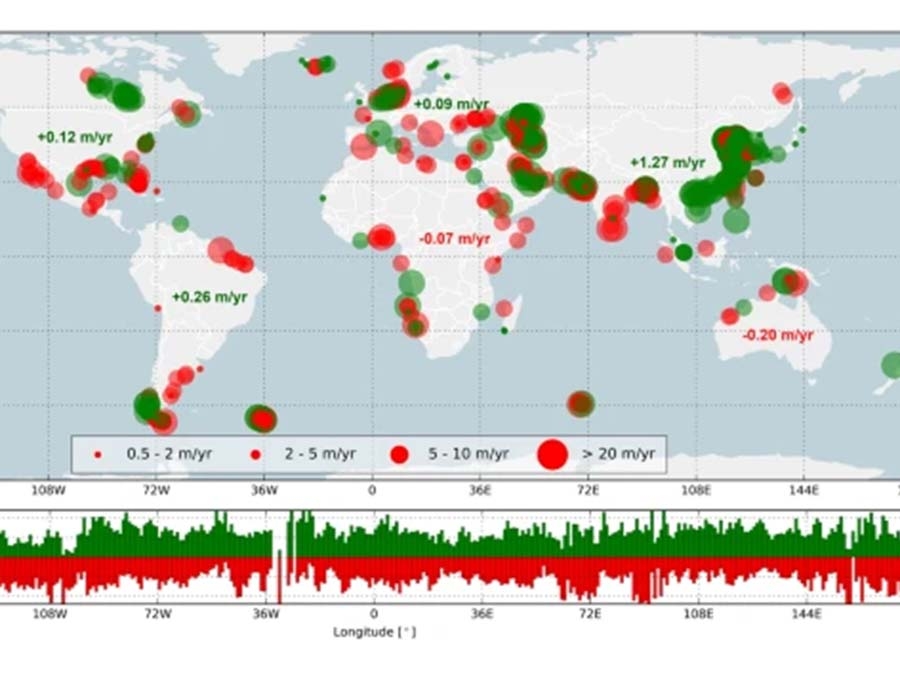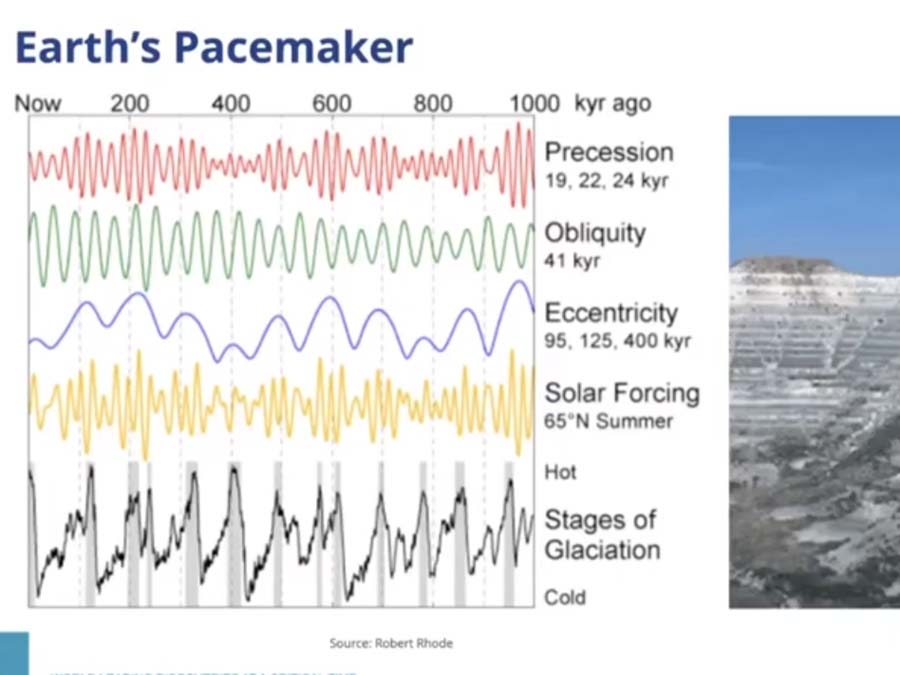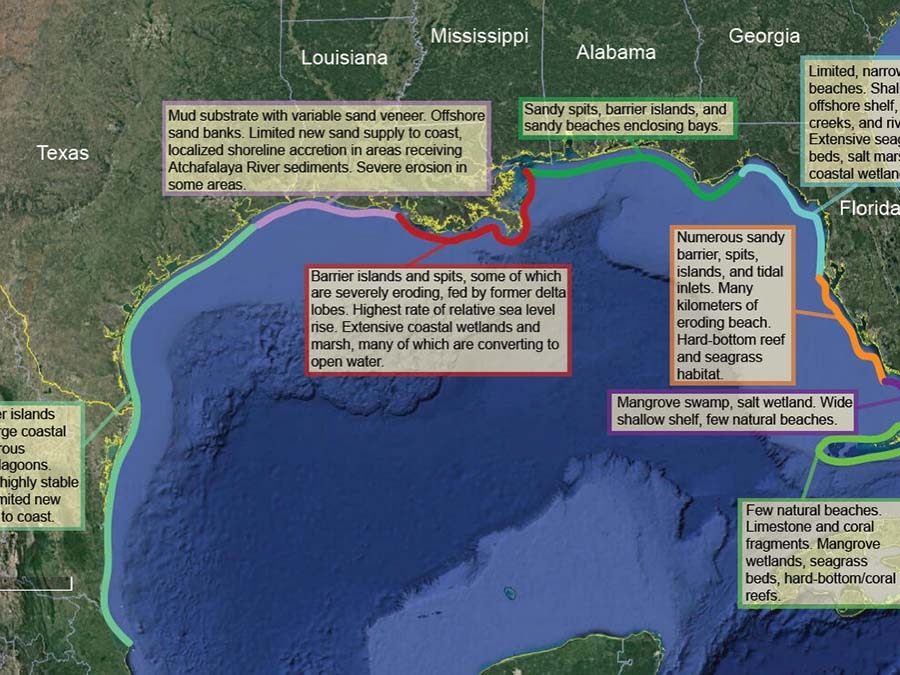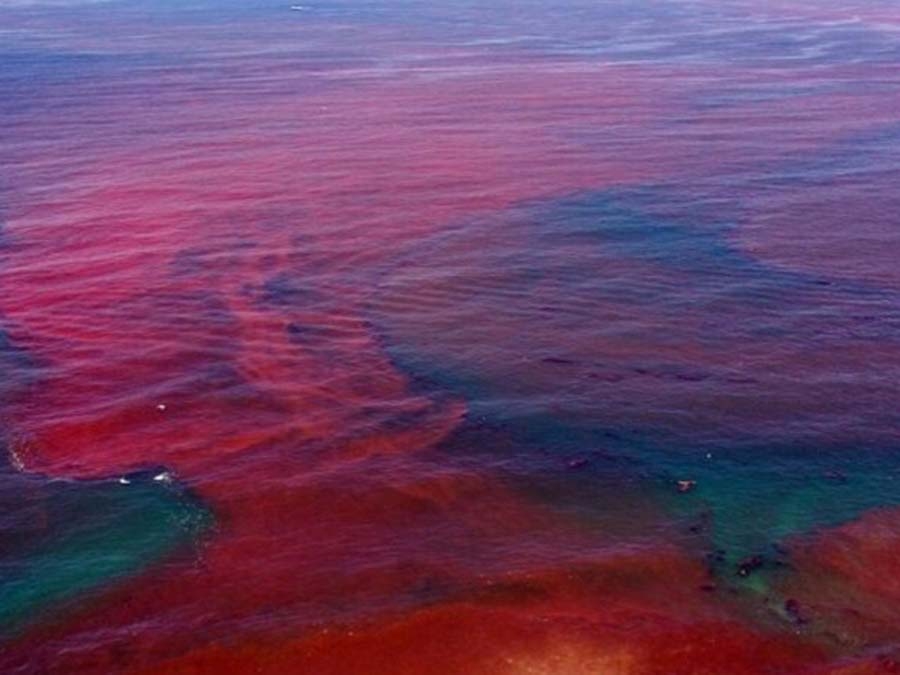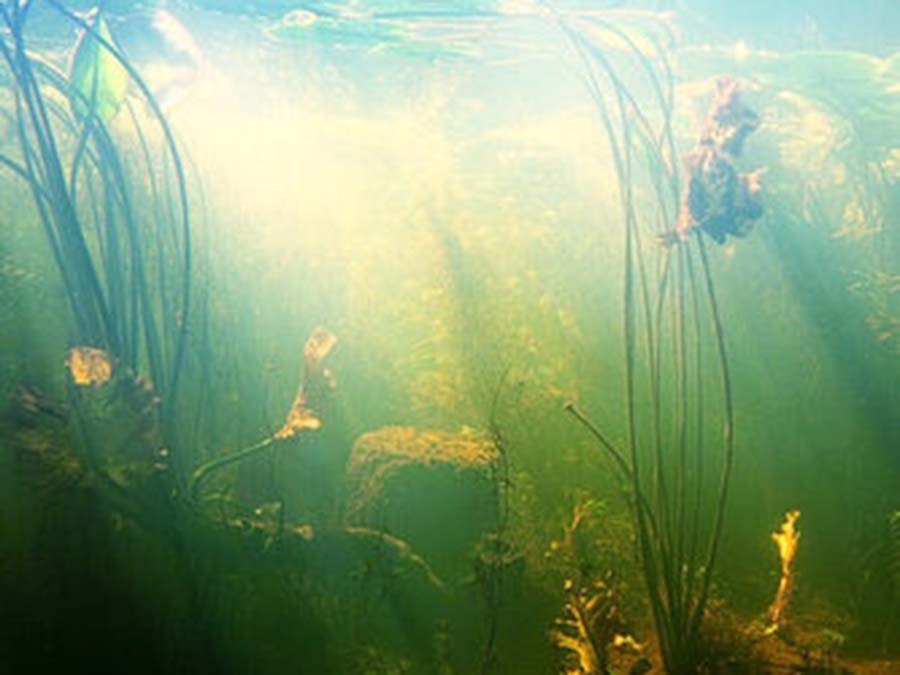Filter These Results +
In The Chesapeake Bay, Saving Seagrasses Can Fight Ocean Acidification
Surprisingly, minerals formed in restored seagrass beds can offset human-caused acidification miles away.
Inaturalist
One of the world's most popular nature apps, iNaturalist helps you identify the plants and animals around you. Get connected with a community of over a million scientists and naturalists who can help you learn more about nature! What's more, by recording and sharing your observations, you'll create research quality data for scientists working to better understand and protect nature.
Integrating Hohrticulture Biology And Environmental Coastal Issues Into The Middle School Science Curriculum
It is essential that environmental education be integrated into the science classroom. Many educators use environmental education to enhance student science-based knowledge. Studies have shown that introducing environmental education not only raises science scores, but other subject scores as well (Wakefield, 2001), therefore the use of environmental education in the classroom maybe an excellent strategy to obtain student interest and increase student knowledge of all subject areas. The Louisiana Sea Grant College Program (Sea Grant) has taken this idea and put it into action.
It's Us: Humans As Agents Of Change Within Earth's Climate System
Human impacts on the climate system are becoming increasingly evident, moving climate change from a topic that is abstract and faraway to one that is right before our eyes. It's our job to help students learn about our role in altering the climate, but it's important to do so in a way that's constructive and solutions-oriented. Educational materials from the CLEAN collection can help you navigate this essential topic. Presenter: Karin Kirk, Geologist and Science Writer.
Land Area Change In Coastal Louisiana (1932 To 2016)
Coastal Louisiana wetlands are one of the most critically threatened environments in the United States. These wetlands are in peril because Louisiana currently experiences greater coastal wetland loss than all other States in the contiguous United States combined. The analyses of landscape change presented here have utilized historical surveys, aerial, and satellite data to quantify landscape changes from 1932 to 2016. Analyses show that coastal Louisiana has experienced a net change in land area of approximately -4,833 square kilometers (modeled estimate: -5,197 +/- 443 square kilometers) from 1932 to 2016. This net change in land area amounts to a decrease of approximately 25 percent of the 1932 land area.
Louisiana A Coastal Attraction
This resource provides Louisiana population highlights from 1950 to 2018 and includes interactive maps.
Marine Debris Art
Lula Gil founded Water Journey, a movement communicating sustainability through art and water sports. Her art consists of transforming plastic waste she finds at Rio de la Plata River, into pieces of art to raise awareness about the plastic pollution affecting the seas and inspire people to connect with Mother Nature through their habits. For her, art evokes sensitivity and helps to understand this topic from an intimate perspective. Here is a quick and easy step-by-step guide with a few tips to create plastic art.
Microplastics Shoreline Survey
Microplastics are less than 5mm in size and account for over 90% of the world's marine plastics. But they are often missed in beach clean ups and many people do not see them. This protocol is designed to count microplastics on sandy beaches.
Mississippi River Diversion Could Save Louisiana's Drowing Coast
Engineers are working to help reconnect the Mississippi River to Louisiana's sediment-starved wetlands in an effort to rebuild some of the land that is disappearing at a rate of almost 11,000 acres a year - or roughly a football field an hour. The diversions will be major civil works projects without compare. The work will require careful scheduling to maintain flood protection as the Mississippi River levee comes down and a diversion gate is put in its place. And that will be the easy part. The projects must be operated to divert the most river sediment and the least amount of water to minimize the impact on the people and wildlife in Barataria Bay. Too much river water could flood communities and kill fisheries.
Nurdle Patrol
Nurdle Patrol started in November 2018 after a large number of plastic pellets washed up on Mustang and North Padre Islands in Texas during September 2018. We are looking to gather information about where nurdles are located, remove the nurdles from the environment, and create awareness about the nurdle issue." To access the Nurdle Patrol training video, click here
Participatory Modeling: Connecting Local Knowledge And Scientific Understanding
During five meetings in 2018, representative community members in St. Bernard Parish were involved in a fact-finding and participatory modeling activity. Areas of risk were identified, and potential natural and nature-based solutions were tested through modeling. The models were adjusted based on the community group's feedback. This summary outlines how this project moved forward, what was discovered through this new process, and if the community found value in the approach.
Patterns In Submerged Aquatic Vegetation In The Lower St. Johns River, Flordia, From 2001-2019
To understand resiliency of submerged aquatic vegetation (SAV) communities with distance from the river mouth, SAV monitoring data, consisting of nine taxa, were analyzed in the lower St. Johns River, Florida, from 2001 to 2019. Patterns were evaluated with changes in salinity, turbidity, and weather events (e.g., hurricanes).
Plaquemines Parish Comprehensive Master Plan: Coastal Protection And Restoration
Coastal restoration plays a paramount role in protecting Plaquemines' citizens from storm surge and maximizes protection will allow for the expansion of Plaquemines' economic base. The purpose of the coastal restoration element of the Comprehensive Master Plan is to review and assess coastal restoration plans and activities in Plaquemines Parish. The goal of this section is to help the Parish government more effectively plan and prepare for future growth in a manner that offers maximum protection for residential, commercial, and industrial investment. Coastal restoration measures have been recognized as sustainable solutions along with flood protection levees to provide the Parish citizens with adequate flood protection against storm surge.
Preserving Our Place- A Community Field Guide To Engagement, Resilience, And Resettlement: Community Regeneration Int He Face Of Environmental And Developmental Pressues
Community is self-defined and complicated. This field guide does not define what a community is or is not, but it is intended for those communities whose lifeways are threatened by environmental change that has exceeded the carrying capacity of the community's social and ecological infrastructure. The problem is more often defined as risks to infrastructure, but the loss of lifeways is not irrelevant. We suggest that social concerns must not be displaced in the face of risk, and that cultural continuation and survival is as important as infrastructure. In fact, supporting lifeways in communities with deep ecological connections could well have prevented the impacts now driving adaptation.
Protecting Water Quality
The quality of water we use and drink determines in large part quality of our lifes. Clean water is essential to the health and well-being of people preserving the integrity of the natural environment and sustaining economies.
Protection Of Seagrasses Key To Building Resilience To Climate Change, Disasters- New Un Report
Seagrass meadows can be a powerful nature-based climate solution and help sustain communities hard-hit by stressors such as the COVID-19 pandemic, but these important ecosystems continue to decline.
Sav Education
This online data viewer provides user-friendly access to SAV education. The tool summarizes general change trends and provides tables, maps, and reports.
Seagrass Ecosystem Webinar
Seagrass ecosystems are hugely important for the Bahamas for so many reasons! Watch this interesting lecture from Forfar Field Station Educational Staff on Andros Bahamas as they explain why this is an invaluable ecosystem and outline the research project undertaken at Forfar with the Smithsonian to help preserve Seagrass meadows.
Seagrass-Watch
Seagrass-Watch Global Seagrass Observing Network (established in 1998) partners scientists with citizens to accurately monitor the status and trends in seagrass condition. The network has conducted over 5700 assessments at 418 sites across 26 countries, involving thousands of dedicated participants.
Silent But Sneaky: How The North Atlantic Garbage Patch Threatens Marine Life
Many people are familiar with the Great Pacific Garbage Patch, a large mass of plastics floating in the North Pacific that stretches as wide as the state of Texas. The reason for this accumulation? The North Pacific Gyre, formed by four prevailing ocean currents in the northern Pacific, continuously rotates at a clockwise pattern, keeping the debris in one large mass. Less noticed, however, is the North Atlantic Garbage Patch. This garbage patch sits hundreds of miles offshore of the southeastern United States and is about the same size as the Great Pacific Garbage Patch.
Something Old And Something New: Adaptive Reuse Reinvigorates Urban Neighborhoods
With new construction in the works on practically every corner in booming American metropolises, the reigning philosophy of urban development seems to be "out with the old and in with the new." But is this constant race towards bigger, better, and shinier projects really beneficial to city residents and visitors?
Submerged Aquatic Vegetation Habitats Store Significant Amounts Of Organic Carbon In Coastal Louisiana
The ability of natural ecosystems to sequester significant amounts of organic carbon provides a good example of an ecosystem service that can be used in climate mitigation programs on local and regional scales. These mitigation programs may reduce the potential impact of increasing carbon dioxide concentrations in the atmosphere that are directly and indirectly driving climate change.
Submerged Aquatic Vegetation: A Habitat Worth Sav-Ing
Submerged aquatic vegetation is one of the most productive fish habitats on earth. We work to protect this important habitat, ensuring that it remains healthy and has a chance to thrive.
Taking Steps Together On Equity & Climate Change: A Report By And For New Orleanians
This report is about how we live in New Orleans and the steps we can take to achieve equity through citywide action on climate change. In our city, African Americans, other people of color, low income families and individuals, the elderly and youth face various forms of inequity and are also vulnerable to the impacts of climate change. The National Climate Assessment warns that "low-income communities, some communities of color, children, and the elderly," are at great risk of climate change that can "exacerbate existing social and economic inequalities..." And, according to the UN panel of climate scientists, the impacts of climate change will be devastating if action is not taken to reduce greenhouse gas emissions by fifty percent by the year 2030. These are warnings we cannot ignore"
The Biggest Likely Source Of Microplastics In California Coastal Waters? Our Car Tires
Driving is not just an air pollution and climate change problem - turns out, it just might be the largest contributor of microplastics in California coastal waters. That is one of many new findings, released Wednesday, from the most comprehensive study to date on microplastics in California. Rainfall washes more than 7 trillion pieces of microplastics, much of it tire particles left behind on streets, into San Francisco Bay each year - an amount 300 times greater than what comes from microfibers washing off polyester clothes, microbeads from beauty products and the many other plastics washing down our sinks and sewers.
The Challenge Of Tracking Nutrient Pollution 2,300 Miles
Nitrogen and phosphorus are essential nutrients - yet too much of a good thing is not always a good thing. Scientists are investigating nutrient pollution down the Mississippi River. Each spring, water flows approximately 2,300 miles down the Mississippi River, beginning its journey at Lake Itasca in northern Minnesota and emptying into the Gulf of Mexico. Along the way, streams and rivers accumulate nutrients that run off the land and into the waterways, and eventually these nutrients enter the Gulf of Mexico. Spring pulses of nutrients to the Gulf contribute to the second largest hypoxic - or low oxygen - zone in the world.
The Fact Of Restoring The Louisiana Coast
On average, a football field of land disappears into the Gulf of Mexico every 100 minutes. Over thousands of years, the Mississippi River carried sediment to the Louisiana coastline, building up marshes, wetlands and new land. But today, because of canals and levees that constrict and confine the path of the river, the sediment cannot reach the delta to replenish the eroding wetlands.
Since the 1930s, Louisiana has lost close to 2,000 square miles of wetlands, an area roughly the size of Delaware.
The Guide To Teaching Climate Science
This series of web pages introduces climate science in a sequence that illustrates different aspects of the climate system. Natural and human influences on climate are presented here, as well as the effects of interactions between parts of Earth's systems. Special emphasis is placed on the methods that scientists use to study the climate and make predictions about future impacts, as this is a topic that is sometimes misunderstood. The overarching Guiding Principle states that humans can take actions to reduce climate change and its impacts, which is a key part of teaching climate science. Taken together, these concepts describe climate literacy.
The Magic Of Seagrass
Seagrass certainly doesn't get the interest and protection it deserves. That's why we've created this officially endorsed Ocean Decade Toolkit providing key facts, imagery and other tools needed to help create awareness and inspire action.
The State Of The World's Beaches
Coastal zones constitute one of the most heavily populated and developed land zones in the world. Despite the utility and economic benefits that coasts provide, there is no reliable global-scale assessment of historical shoreline change trends. Here, via the use of freely available optical satellite images captured since 1984, in conjunction with sophisticated image interrogation and analysis methods, we present a global-scale assessment of the occurrence of sandy beaches and rates of shoreline change therein... The majority of the sandy shorelines in marine protected areas are eroding, raising cause for serious concern.
Then And Now
In this lesson, students examine an article about a tiny island community off the Louisiana Coast and discuss how it is being affected by the changing ecosystem.
Understanding Climate Change: Lessons From Deep Time
In this talk, Dr. Kate Moran, Chief Executive Officer at ONC, introduced greenhouse gases and the greenhouse effect, explained climate forcing, compared Earth's ancient climate with today's, and discussed ways humanity can both mitigate and adapt to climate change.
Understanding The Long-Term Evolution Of The Coupled Natural-Human Coastal System: The Future Of The U.S. Gulf Coast
The U.S. Gulf of Mexico Coast...provides a valuable setting to study deeply connected natural and human interactions and feedbacks that have led to a complex, interconnected coastal system. The physical landscape in the region has changed significantly due to broad-scale, long-term processes such as coastal subsidence and river sediment deposition, as well as short-term episodic events such as hurricanes. Modifications from human activities, including building levees and canals and constructing buildings and roads, have left their own imprint on the natural landscape. ... Promoting the resilience and maintaining the habitability of the Gulf Coast into the future will need improved understanding of the coupled natural-human coastal system, as well as effective sharing of this understanding in support of decision making and policies.
What Is A Harmful Algal Bloom?
Harmful algal blooms, or HABs, occur when colonies of algae - simple plants that live in the sea and freshwater - grow out of control and produce toxic or harmful effects on people, fish, shellfish, marine mammals and birds. The human illnesses caused by HABs, though rare, can be debilitating or even fatal. Ranging from microscopic, single-celled organisms to large seaweeds, algae are simple plants that form the base of food webs. Sometimes, however, their roles are more sinister. Under the right conditions, algae may grow out of control - and a few of these "blooms" produce toxins that can kill fish, mammals and birds, and may cause human illness or even death in extreme cases.
What Is Seagrass
Since the time of the dinosaurs, four groups of flowering plants (angiosperms) colonised the oceans. Known as 'seagrass', they are the only flowering plants that can live underwater. More closely related to lilies and gingers than to true grasses, they grow in sediment on the sea floor with erect, elongate leaves and a buried root-like structure (rhizome).
Why Is Seagrass Important
Seagrass provides food and shelter for many organisms, and are a nursery ground for commercially important prawn and fish species. The high primary production rates of seagrasses are closely linked to the high production rates of associated fisheries.
PC: Climate Change Lesson Plan
Students explore the choices communities face as they grapple with the effects of climate change in this five-day introduction to climate change and migration.
PC: Climate Change Guided Review
In this guided review, you will explore the fundamental concepts of climate change, the
role humans have played, and the consequences human populations are already
beginning to face
PC: Coastal Land Loss Lessons Plan
Students explore the causes of coastal land loss and possible solutions for coastal towns,
like Phoenix, LA and nearby communities.
PC: Coastal Land Loss Guided Review
In this course you will develop an understanding of how humans have shaped coastal land
loss, the impacts of land loss on coastal communities, and potential solutions for those it
affects
PC: Development and Wetlands Lesson Plan
Students explore stakeholder perspectives, the consequences of the loss of wetlands, and
possible alternatives to the destruction of these valuable resources
PC: Development and Wetlands Guided Review
In this guided review, you will learn about the ecosystem services provided by wetlands and uncover the impacts of urbanization. This review seeks to outline the potential ramifications of urbanization on wetland habitats and highlight the possible routes to creating more equitable and sustainable communities through responsible development practices.
PC: Marine Debris Lesson Plan
Students will explore the origins and consequences of marine debris. They will illustrate the journey of a piece of discarded plastic and the events that occur as it enters a waterway. They will examine the data that reveals the pervasive impact it is having on water and widlife throughout the world. They will also propose possible solutions to curb marine debris.
PC: Marine Debris Guided Review
In this guided review, you will learn about marine debris and its impacts on humans and the environment. This review seeks to outline the origins, pathways, and studies surrounding marine debris. In the following resources you will find information about the consequences of marine debris as well as the strategies being developed to mitigate its impacts.
PC: Marsh Restoration Lesson Plan
Students investigate a small urban marsh restoration project and explore the impacts it has on the flora and fauna at the mouth of Bayou Saint John. They identify unexpected side effects of the project and work together to propose their own mini-marsh restoration project.
PC: Marsh Restoration Guided Review
In this guided review, you will learn about small-scale restoration projects and the methods that are used to plan and implement them. This review seeks to outline the benefits of small-scale restoration projects, while also noting the challenges they may present.
PC: Microplastics Lesson Plan
Students will explore the origins and consequences of our use of microplastics. They will illustrate the journey of a piece of discarded plastic and the events that transform it back into microplastics. They will examine the data that reveals the pervasive impact it is having on water and wildlife throughout the world. They will also propose possible solutions to curb microplastics pollution.
PC: Microplastics Guided Review
In this guided review, you will learn about microplastics and their impacts on humans and the environment. This review seeks to outline the origins, pathways, and studies surrounding microplastics. In the following resources you will find information about the consequences of microplastic pollution will present as well as the strategies being developed to mitigate its impacts.
PC: Submerged Aquatic Vegetation Lesson Plan
Students explore the importance of submerged aquatic vegetation and seagrass, how to identify them, why they are in decline, and how they can be restored.
PC: Submerged Aquatic Vegetation Guided Review
In this guided review, you will learn about submerged aquatic vegetation (SAV) and its impact on the environment, including the organisms they sustain. In the following resources, you will find information about SAV, the unique ecosystem they create, the other benefits they provide, and why it is vital to protect this essential habitat.
